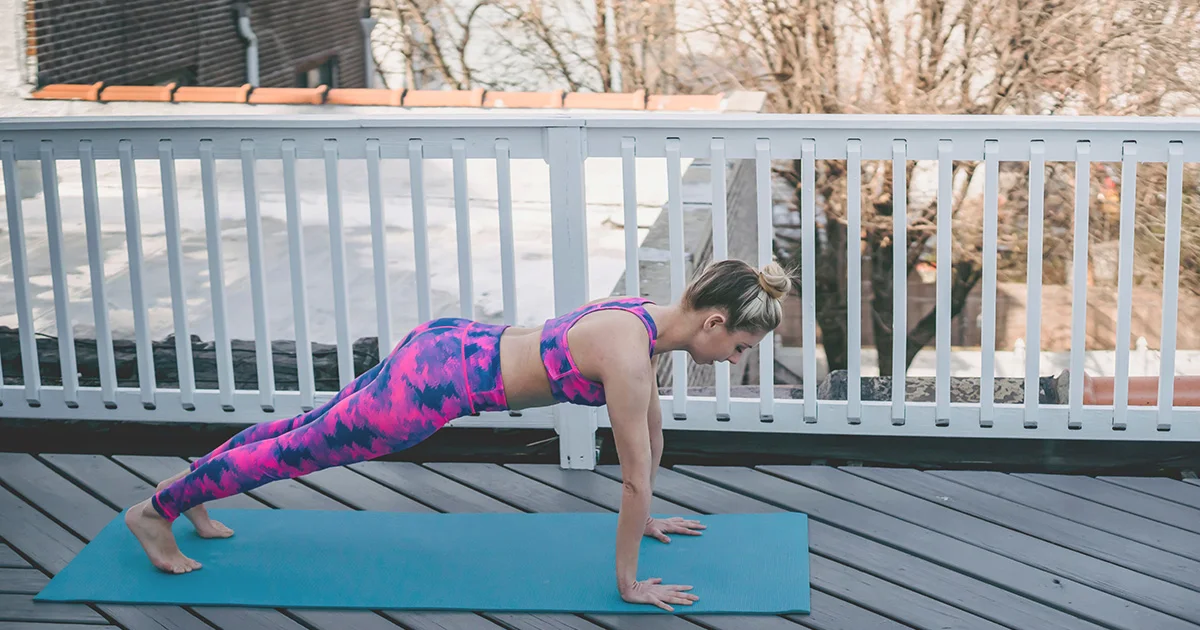Here's what we'll cover
Here's what we'll cover
Here's what we'll cover
Trying to understand a proper portion size can be confusing—should you be using a food scale? An app? Your palm? Everyone seems to say something different.
Learning the right portion sizes for you can take time, so let’s break down what a proper portion size is and tips to help with measuring.
What are proper portion sizes?
Portion sizes are the recommended amount of a specific food you should eat in one sitting. The proper portion size varies between foods and can even be different depending on how the food is prepared.
Sticking to healthy portion sizes can help you stay mindful of how much you’re eating throughout the day. It’s common for people to finish all of the food they are served, so portioning out your food helps to reduce the amount of food you eat, preventing overeating.
Examples of recommended serving sizes for meals (NIH, 2019):
Non-starchy vegetables: 1 cup
Fruit: 1 whole fruit for apples, pears, etc., and about 1.5 to 2 cups for cut fruit or berries
Grains or starchy foods: ½ to 1 cup
Dairy: ½ to 1 cup
Protein foods (meats, eggs, nuts, beans): 4 to 6 ounces
Oils: 1 to 2 teaspoons
11 tips and tricks for measuring and practicing portion control
Here are 11 tips to help with portion control:
1. Read food labels
The amount of food you should eat will vary depending on the type. One of the best ways to tell how many calories and other nutrients are in a serving size is to read the food label.
Serving sizes and nutrition information on food labels is based on a 2,000 calorie-a-day diet. So, if that isn’t the number of calories you’re aiming for each day, you may need to adjust the number of servings or portion sizes for your needs.
You may be surprised to see that the way food is packaged isn’t always the same as a serving. For example, a 20 oz. bottle of soda—the type found in most vending machines—is actually 2.5 servings. That means that if you drink the whole bottle in one sitting, you’ll need to multiple the per-serving calories, sugar, etc., by 2.5 to find your total.
2. Use measuring cups
When you’re first learning what proper portion sizes look like, it can be confusing and even a little overwhelming. Over time, you’ll likely be able to tell by looking if a food is about the right size. But in the beginning, it can help to have a foolproof method, like measuring cups.
Using measuring cups to see exactly what 0.5 cup or 1 cup of food looks like helps take the guesswork out of portioning out your food choices.
3. Hand references
You won’t always have access to measuring tools, or maybe you don’t have the time to pull them out one day. Instead of measuring devices, you can simply use your hand as a reference.
This can be a flawed method since everyone has different hand sizes. Still, taller people tend to have larger hands, but they also have higher calorie needs because of their larger size, so it roughly works out (Sanli, 2005).
Here are some estimated serving sizes when using your hands as measuring tools:
Palm: A serving of protein food, like meat, fish, or beans, should be about the size of the palm of your palm. Ideally, a level or flat layer, not piled onto your palm.
Fist: The size of your fist represents about a portion of non-starchy vegetables.
Cupped hand: One cupped hand is about one portion of a higher carbohydrate food like grains or starchy vegetables.
Thumb: About the size of one thumb represents the portion for healthy fats, like nuts or oils.
4. Use smaller plates
Visual cues play a role in fullness and satisfaction with meals. Large areas of open space on your plate give the illusion of a smaller portion than the same amount of food on a small plate. As a result, many people will often fill a plate when serving themselves, no matter how big that plate is. That means that by serving meals on smaller plates, you increase your chances of consuming fewer calories at the meal.
So, swap your larger bowls and plates for smaller dishes for a simple change with a significant impact on your eating habits.
5. Ask for a to-go box at restaurants
Most restaurants are known for their outrageously large portion sizes. Many provide 2–3 times a normal serving size.
So, to help with portion control when eating out, ask for a to-go box as soon as your food arrives at your table. Before you eat—not after—portion half or two thirds of the meal into the to-go box to take home with you for later.
Alternatively, you could consider ordering a smaller appetizer for your main meal or splitting a meal with a friend.
6. Meal prep
Planning your meals in advance and portioning out nutritious food can make it easier to make healthy choices when you’re hungry. And on those busy and stressful days, that work ahead of time really makes a difference.
One option is to prepare food in bulk—making extra of any given meal or side—and portion leftovers into containers. Or you could cut up veggies and portion uncooked foods, then grab your prepped food and finish cooking when you’re ready to eat.
7. Use objects references for portions
Just like your hand size can help estimate portion sizes, you can use other objects to help you visualize a serving of food. Here are some examples:
Deck of cards = about 1 serving size of beef, fish, or poultry
1 dice = about 1 serving of butter or margarine
3 dice = about 1 ounce of cheese
Tennis ball = 1 cup of fruit, vegetables, or whole grains
Golf ball = 1 ounce of nuts
8. MyPlate method
The MyPlate method is the current guide published by the USDA’s Center for Nutrition Policy and Promotion to demonstrate healthy eating. The method depicts healthy eating with a visual of a plate broken down into sections, including:
About ¼ of your plate: lean protein, like chicken or fish
About ¼ of your plate: whole grains and starchy vegetables
About ½ of your plate: non-starchy vegetables and fruit
Cup of low fat or fat-free dairy

9. Portion out food before eating
Eating straight from a container may make it more likely for you to mindlessly snack and finish the whole container without realizing it.
Research shows eating out of a larger container increases food intake (Marchiori, 2012). So, before sitting down with the container, grab a small bowl or dish to portion out a serving size of the food.
10. Use a food diary
Writing down the food you eat, either on paper or using an app on your phone, helps bring awareness to your food choices. When you aren’t paying attention, it’s easier to mindlessly snack and eat more than you realize.
11. Practice mindful eating
Mindful eating is a meditation technique that brings awareness to your meals. It can help to reduce impulse eating and overindulging (Janssen, 2018).
While mindful eating doesn’t directly help you with portioning out food, it does help increase satisfaction with proper portion sizes of food. When you’re distracted while eating, you’re more likely to overeat. So, increasing your focus while eating helps increase satisfaction with meals.
Here are some tips for practicing mindful eating:
Turn off all distractions—that means no TV, phone, reading, or any other distractions.
Take a few deep breaths before starting your meal to reduce stress.
Pay attention to the taste, texture, appearance, and smell of the food you’re eating.
Chew slowly and take smaller bites.
Ask yourself questions like “how full do I feel?” and “how satisfying is this food?”
Calorie-dense vs. nutrient-dense foods
Calorie dense foods are foods that contain a large number of calories in a small size. They also tend to have fewer vitamins and minerals. Examples of calorie-dense foods include chips, juice, candy, fried food, and ice cream.
Nutrient-dense foods refer to foods that contain a large number of non-calorie nutrients (like vitamins, minerals, and fiber) compared to the total calories in that food. These types of food tend to help you feel full longer and help with healthy weight maintenance or weight loss.
Examples of nutrient-dense foods include fruits, vegetables, whole grains, and lean proteins.
Of course, a healthy diet can have a balance of calorie-dense and nutrient-dense foods—depriving yourself of your favorite treats isn’t sustainable in the long run. But whether you’re trying to lose weight, maintain your weight, or just keep yourself healthy, nutrient-dense foods should make up the majority of what you eat and drink.
How calorie-dense foods leave you feeling hungry
Nutrient-dense foods tend to have higher amounts of water and fiber, helping them take up more room in your stomach. On the other hand, calorie-dense foods, like soda, candy, and chips, take up a smaller amount of space in your stomach.
When your stomach is empty, your brain produces signals to tell you to eat. As you eat, the food takes up space in your stomach, which signals to your brain you’re full and to stop eating.
Since most calorie-dense foods will take up less space in your stomach, it takes longer to feel full, and you’re more likely to feel hungry more quickly.
Nutrient-dense foods, like lettuce, berries, and broccoli, take a larger volume to reach the same number of calories. As a result, you’ll eat more nutrient-dense foods to satisfy your calories, filling up your stomach more and leaving you feeling full faster and longer.
Here’s an easy way to picture this: eating apples versus drinking apple juice. About two cups of sliced apples is 100 calories, while it only takes one cup of apple juice to hit about 110 calories. You’re much more likely to feel full with the apples—the nutrient-dense food—than you are with a glass of calorie-dense apple juice.
By choosing more nutrient-dense foods and practicing the portion-measuring tips above, you’ll become more comfortable with choosing healthy portions over time. Eventually, you’ll learn what a healthy portion is and may even be able to eyeball a single-serving without measuring—a pretty nifty superpower when it comes to rocking your healthy weight journey!
DISCLAIMER
If you have any medical questions or concerns, please talk to your healthcare provider. The articles on Health Guide are underpinned by peer-reviewed research and information drawn from medical societies and governmental agencies. However, they are not a substitute for professional medical advice, diagnosis, or treatment.
References
Janssen, L. K., Duif, I., van Loon, I., de Vries, J., Speckens, A., Cools, R., et al. (2018). Greater mindful eating practice is associated with better reversal learning. Scientific Reports , 8 (1), 5702. doi: 10.1038/s41598-018-24001-1. Retrieved from https://www.ncbi.nlm.nih.gov/pmc/articles/PMC5890263/
Marchiori, D., Corneille, O., & Klein, O. (2012). Container size influences snack food intake independently of portion size. Appetite , 58 (3), 814–817. doi: 10.1016/j.appet.2012.01.015. Retrieved from https://pubmed.ncbi.nlm.nih.gov/22306436/
National Institute on Aging. (2019). Serving and portion sizes: how much should I eat? Retrieved from https://www.nia.nih.gov/health/serving-and-portion-sizes-how-much-should-i-eat
Sanli, S. G., Kizilkanat, E. D., Boyan, N., Ozsahin, E. T., Bozkir, M. G., Soames, R., et al. (2005). Stature estimation based on hand length and foot length. Clinical Anatomy , 18 (8), 589–596. doi: 10.1002/ca.20146. Retrieved from https://pubmed.ncbi.nlm.nih.gov/16187319/












